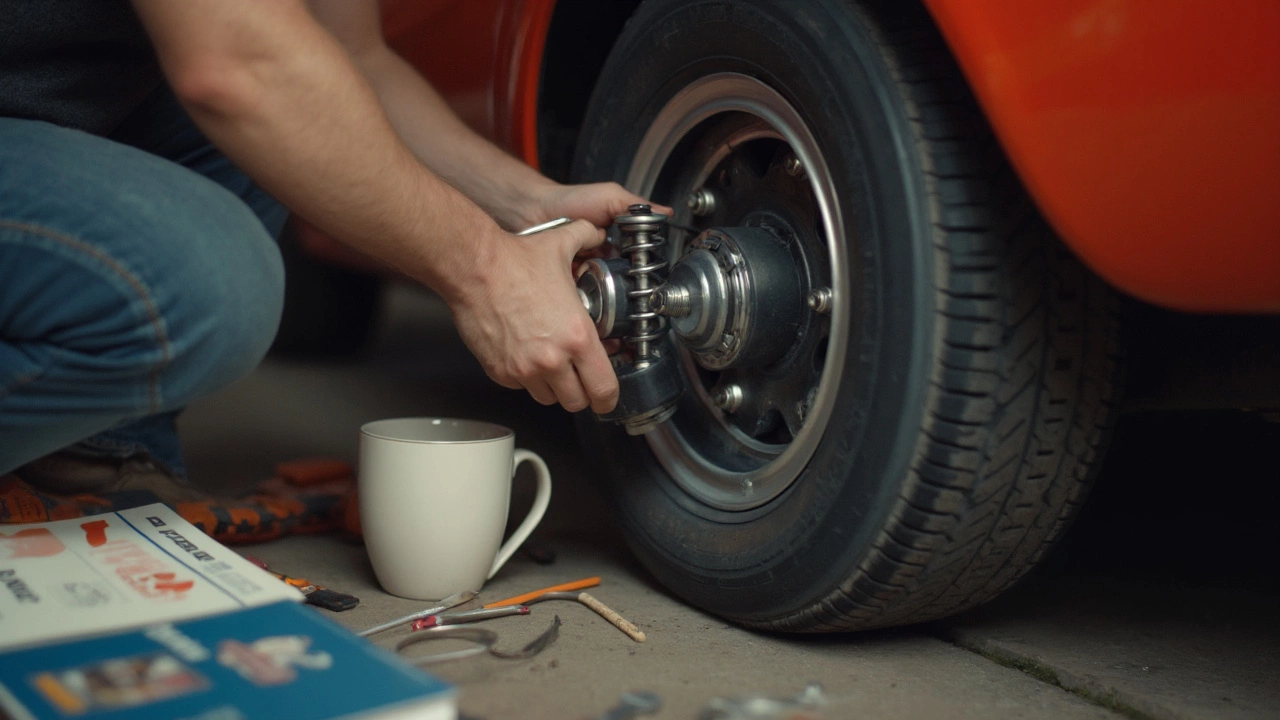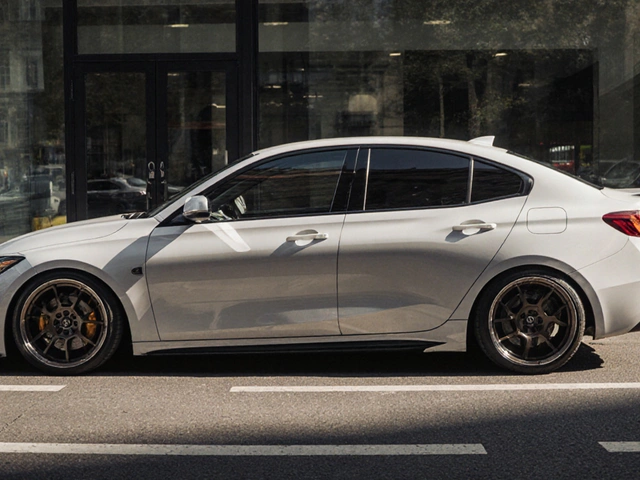Ever wondered if lowering springs could wreck your commute—or make it way better? It’s not just about slamming your car for looks. Lowering springs can change everything: the way your car handles corners, the bumps you feel (or don’t feel), even your wallet after a rough installation.
People swap their stock springs because they want their car to sit lower and look more aggressive. But for daily driving, comfort matters just as much as cool factor. Stock suspensions are all about soft, floaty rides. With lowering springs, you lose some of that soft cushiness, but you gain sharper handling and less roll in turns.
Here’s the tricky part: not all lowering springs are created equal, and not every spring works for every driver or car. Some offer a mild drop that still soaks up potholes, while others will have you counting every bump. So before you make the jump, think about your local roads, how much you care about ride comfort, and whether you want to pair springs with new shocks (most people should).
- The Basics of Lowering Springs
- Comfort vs. Performance Trade-Offs
- How to Pick the Right Lowering Springs
- Installation and Daily Driving Practicalities
- Common Myths and Pro Tips
The Basics of Lowering Springs
Let’s clear things up: lowering springs are shorter, stiffer springs that replace your car’s original coils. They bring your car down closer to the ground, which is why people love them for looks and a sporty vibe. But there’s a lot more going on under the surface than just looks.
When you swap in lowering springs, you’re tweaking your ride’s center of gravity. Lowering the center of gravity helps your car corner flatter, cuts down on body roll, and can tighten up steering. This is why so many folks upgrade—better handling on those everyday turns and highway on-ramps.
It’s not just about style: quality lowering springs often use stronger steel and go through more inspections than factory springs. Some spring brands in 2025 claim up to a 20% stiffer rate than stock, which means more precise feel on the road. Here’s a quick look at how lowering springs stack up to stock springs:
| Feature | Stock Springs | Lowering Springs |
|---|---|---|
| Ride Height Drop | 0" | Usually 1"–2.5" |
| Spring Rate (Stiffness) | Soft/Medium | Medium/High |
| Handling | Comfort | Better control |
| Aggressive Look | No | Yes |
| Price (per set, USD) | $150–$400 | $200–$600 |
One thing a lot of people miss: lowering springs are tuned to work at a shorter height, and pushing your stock shocks past their limits can cause them to wear out faster. That’s why pairing new springs with upgraded shocks is smart if you want things to last and feel right.
There are two main types: progressive-rate springs (softer when cruising, stiffer when cornering) and linear-rate springs (same stiffness all the time). Most daily drivers stick with progressive ones for more comfort on rough roads.
If you’re thinking about making the upgrade, check your car’s clearance under the oil pan and exhaust. Not all cars can handle a big drop without scraping parking lot entries or speed bumps. Stick within 1.5 inches for real-world daily use if you want fewer headaches.
Comfort vs. Performance Trade-Offs
Once you swap out your stock springs for lowering springs, you’ll feel the change right away. The big thing everyone notices is the ride feels firmer. That means less body roll in corners and much better steering response. The catch? You’re probably going to feel more bumps and cracks. It’s the classic give-and-take: the sportier your car feels, the stiffer the ride gets.
Some people ask, “Is it really that different?” Here’s a simple breakdown that shows what you can expect from different setups:
| Setup | Ride Comfort | Handling | Drop (inches) |
|---|---|---|---|
| Stock Springs | Soft | Average | 0 |
| Mild Lowering Springs | Moderate | Good | 1-1.5 |
| Aggressive Lowering Springs | Firm | Excellent | 1.5-2+ |
If your city streets are full of potholes, mild lowering springs are usually the sweet spot. They drop your ride just enough, so it looks mean without feeling like you’re in a go-kart. Aggressive drops look cool but can make speed bumps feel like a personal attack.
Don’t forget—using lowering springs with older, worn-out shocks can make things worse. You’ll lose even more comfort and could blow out your shocks fast. For daily drivers who want the lowering springs benefits without hating their commute, it’s smart to combine fresh shocks and springs. Some brands sell matched kits for this exact reason.
If you really hate the idea of a stiffer ride, sticking closer to factory spring rates but with a mild drop is the best compromise. And if you haul heavy loads or passengers often, check the springs’ weight ratings before you pull the trigger. Too much drop can mess with how your car handles extra weight.

How to Pick the Right Lowering Springs
So, you want your car to sit lower, handle better, and still survive rush hour? Picking the right lowering springs comes down to a few key decisions. You’ll want to match your driving style and daily routes (think: smooth highways vs. pothole rallies) to the spring’s design. There’s no one-size-fits-all solution.
First, let’s talk about drop height. Most street-friendly lowering springs drop the car between 1 and 1.5 inches. This looks cleaner and usually won’t cause scraping or bottoming out. If you go lower than that, you risk hitting driveways or speed bumps, especially if you carry passengers or cargo.
The spring rate is another thing to watch. Spring rate means how stiff or soft the spring feels. Softer rates soak up bumps better, which matters for city streets, but firmer springs improve cornering at the expense of comfort. Big-name brands like Eibach and H&R publish their spring rates, and most daily drivers are happiest sticking close to stock rates but with that sportier lower stance.
Check compatibility—always get springs made for your exact make and model. Some folks try to cheap out with generic kits, but that can wreck your alignment and even your tires.
It’s smart to pair lowering springs with fresh dampers or shocks made for the stiffer setup. Stock shocks can wear out quick with lower springs, leading to a bouncy ride or even dangerous handling.
- Choose a drop height that strikes a balance: enough to look sleek, not so much that every bump is a threat.
- Check spring rates; for daily driving, don’t go too stiff.
- Make sure the kit matches your car’s year, make, and model—no guesswork.
- Plan for an alignment after install; lowering shifts suspension angles.
Curious how big brands stack up for daily use? Here’s a practical comparison of leading spring kits:
| Brand | Typical Drop (inches) | Ride Comfort | Cost Range (USD) |
|---|---|---|---|
| Eibach Pro-Kit | 1.0 - 1.5 | Close to stock, slightly firmer | $200 - $350 |
| H&R Sport | 1.3 - 1.7 | Firmer, sporty feel | $240 - $400 |
| Tein S-Tech | 1.2 - 1.5 | Noticeably sportier, not harsh | $180 - $300 |
Pro tip: spring selection is about compromise. If you drive bad back roads or face lots of speed bumps, don’t chase the lowest drop. Savvy daily drivers pick a setup that blends comfort with style—and isolates them from pothole pain.
Installation and Daily Driving Practicalities
Switching to lowering springs can be a real eye-opener if you’ve only ever dealt with factory parts. The process isn’t a walk in the park, but it’s possible to do at home if you have a decent toolset, including spring compressors, jack stands, and patience. Most shops will quote anywhere from $250 to $500 for labor alone, mostly because working with compressed springs is no joke—they can be dangerous if you don’t know what you’re doing. That said, some car models have strut assemblies that are simpler to remove than others, so costs and headaches can vary.
After installing lowering springs, you’ll notice a few things right away. The car sits lower, of course, but your ride gets firmer—expect to feel more of the bumps and cracks in the road. If you go too low, you risk bottoming out on speed bumps or rough pavement, and your stock shocks might not keep up. For the best results, most guys swap in upgraded dampers that are made for shorter travel and stiffer rates. Stock shocks tend to wear out faster when paired with lowering springs because they’re just not built for that setup.
Don’t forget about the little stuff: tire wear can get weird if your alignment is off after lowering. It’s critical to get a four-wheel alignment as soon as you install the springs. Neglect this and you might chew through tires in a few months. Another thing—watch out for scraping on driveways or ramps, especially if your car already had low ground clearance. Simple fix: take these angles slow, or think about a moderate drop instead of going super low.
- Double check your spring orientation and seating during installation—it matters for noise and safety.
- An alignment is a must-do after installing lowering springs.
- Consider upgraded shocks and bump stops if you want to protect your ride quality and shock lifespan.
- Pay attention to sagging or uneven ride height—this shouldn’t happen if everything’s installed right.
On the daily, make sure you slow down for big bumps and avoid huge potholes when you can. Your lowering springs might not save you from scraping, but a careful approach definitely helps. If you’re using your ride for work or need to haul people in the back seat, don’t go for the lowest drop—keep some practicality for your own sanity.

Common Myths and Pro Tips
Lowering springs get a lot of hype—and some wild rumors. Let’s clear the air and drop some real-world advice to make daily driving smoother and smarter.
First off, you might’ve heard that installing lowering springs kills your ride comfort completely. Not always true. Quality springs, matched with the right shocks, can actually offer a firm but still comfy ride for regular streets. It's the cheap, mismatched setups that wreck your back and kill your handling.
- Myth: Lowering always ruins tire life. Fact: If you skip a proper alignment after lowering, yeah, your tires will wear out fast. But with a good alignment, tire wear can be almost the same as stock.
- Myth: You’ll scrape everywhere. Fact: A moderate drop (around 1 to 1.5 inches) gets you a lower stance without scraping on every driveway. Going more aggressive? Be ready to angle into speed bumps like it’s a stealth mission.
- Myth: Lowering springs are a waste without coilovers. Fact: Many daily drivers run lowering springs only and love them. Coilovers offer more adjustability but cost a lot more and can feel too harsh for commutes.
For daily use, stick to springs that don't drop you more than 1.5 inches unless you're okay with a stiffer ride and the risk of scraping. Brands like Eibach and H&R are well known for balancing comfort and handling. Want hard numbers? Check out this quick stat table from a 2023 owner survey:
| Spring Brand | Drop (inches) | Reported Comfort (1-10) | % No Scraping |
|---|---|---|---|
| Eibach Pro-Kit | 1.0 | 8.2 | 96% |
| H&R Sport | 1.3 | 7.7 | 92% |
| Cheap eBay | 2.0+ | 4.5 | 60% |
One pro tip—after dropping your car, always get a full alignment (not just the front wheels). Suspension shops can also check if your shocks are up to the new springs. And when you hear clunks or rattles after the install, check that everything’s torqued down right—loose bolts happen more than you think.
Bottom line? Pick a trusted brand, match your springs to your shocks, get an alignment, and you’ll get the stance and performance without daily headaches.




